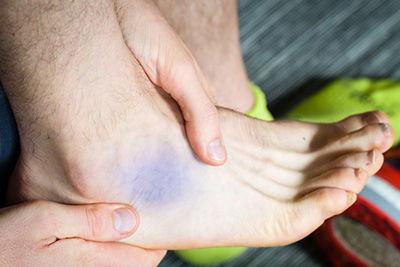
Contusions, also known as bruises, aren’t just skin discoloration. They tell a story about impact, injury, and the body’s amazing healing process. In today’s blog, we’ll break down what causes a bruise, how to identify a bruise based on its size, color changes, and symptoms, and how to best manage a bruise at home. We’ll also look at what to do if you have a bruise and when it’s time to see a doctor.
When a bruise appears, it’s usually caused by blunt force trauma that damages the small blood vessels underneath the skin. Blood then leaks into surrounding tissues, causing the bruise to become discolored, tender, and swollen. From the first redness to the last fading stages, each color of the bruise tells a different story about how the body heals.
Many different scenarios can lead to a bruise, such as everyday bumps and falls, sports injuries, or sports injuries. Understanding the causes of a bruise can help you take preventative measures and reduce the risk of bruising in the future.
Learn how to identify contusions based on their size, color changes, and associated symptoms. From the initial redness to the final fading stages, each hue of a bruise tells a unique tale of the healing process.
Discover effective strategies for managing bruises at home. R.I.C.E. method (Rest, Ice, Compression, Elevation) can be a guide to faster recovery. Weand also examines over-the-counter medications and when it’s important to seek medical attention.
Dive into the fascinating science of how the body heals bruises. Explore the role of enzymes and the immune system in breaking down and absorbing spilled blood, leading to the gradual healing of bruises.
Although some bruises are inevitable, some precautions can help minimize the risk. From using protective gear during sports to creating a safer environment, these tips can be invaluable in preventing unnecessary bruises.
Knowing when to seek medical attention for a contusion (bruise) is crucial to ensure proper care and rule out any underlying issues. While most bruises can be managed at home, there are certain situations where it’s advisable to consult a healthcare professional. Here are instances when you should seek medical attention for a contusion:
If you’re uncertain about the severity of a contusion or if you have any concerns, it’s always a good idea to consult with a healthcare professional. They can assess the injury, provide appropriate advice, and order any necessary tests to ensure proper diagnosis and treatment.
Contusions are a common yet intriguing aspect of our body’s response to injury. By understanding the causes, symptoms, and healing process, you can navigate the world of bruises with confidence. Armed with knowledge, you’ll be better equipped to manage contusions and, in some cases, prevent them altogether. Embrace the fascinating journey of contusions and empower yourself with insights into this everyday phenomenon.